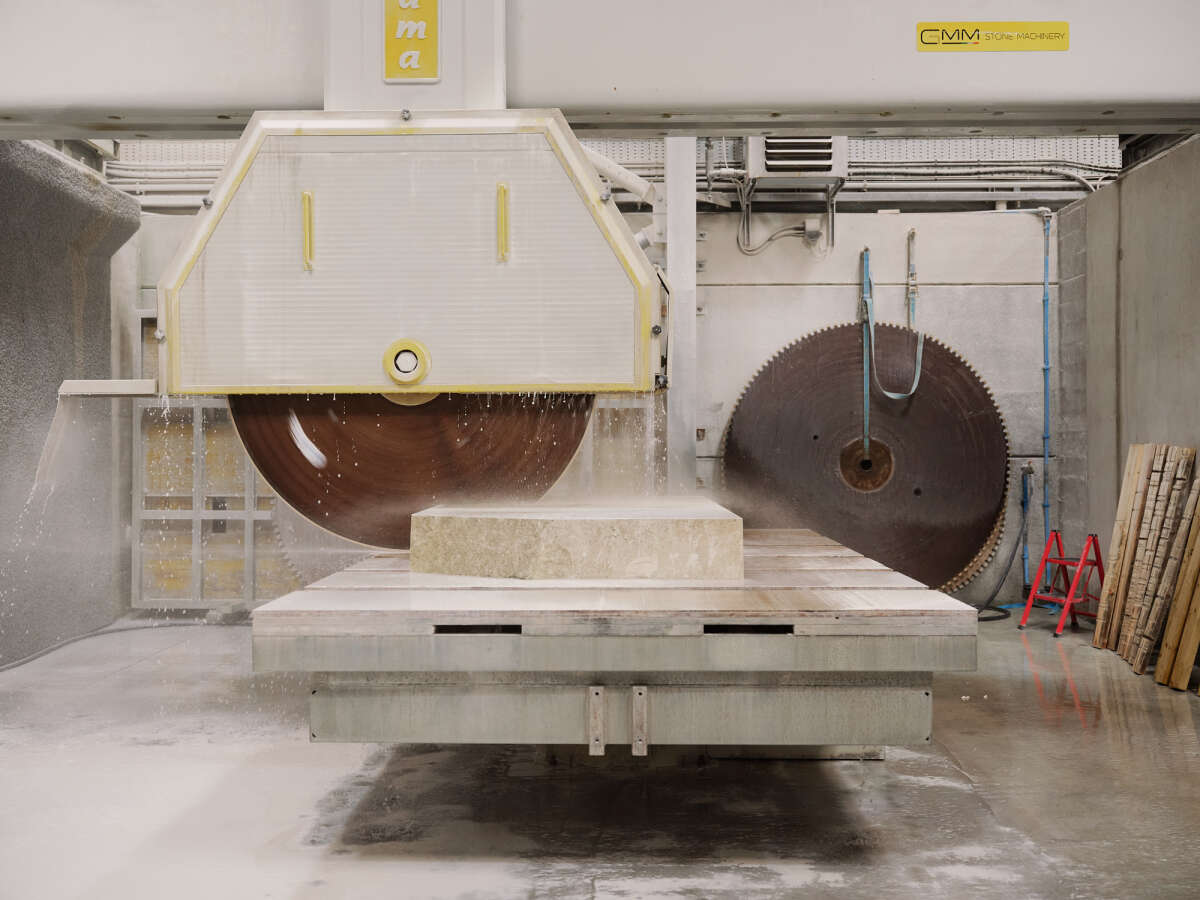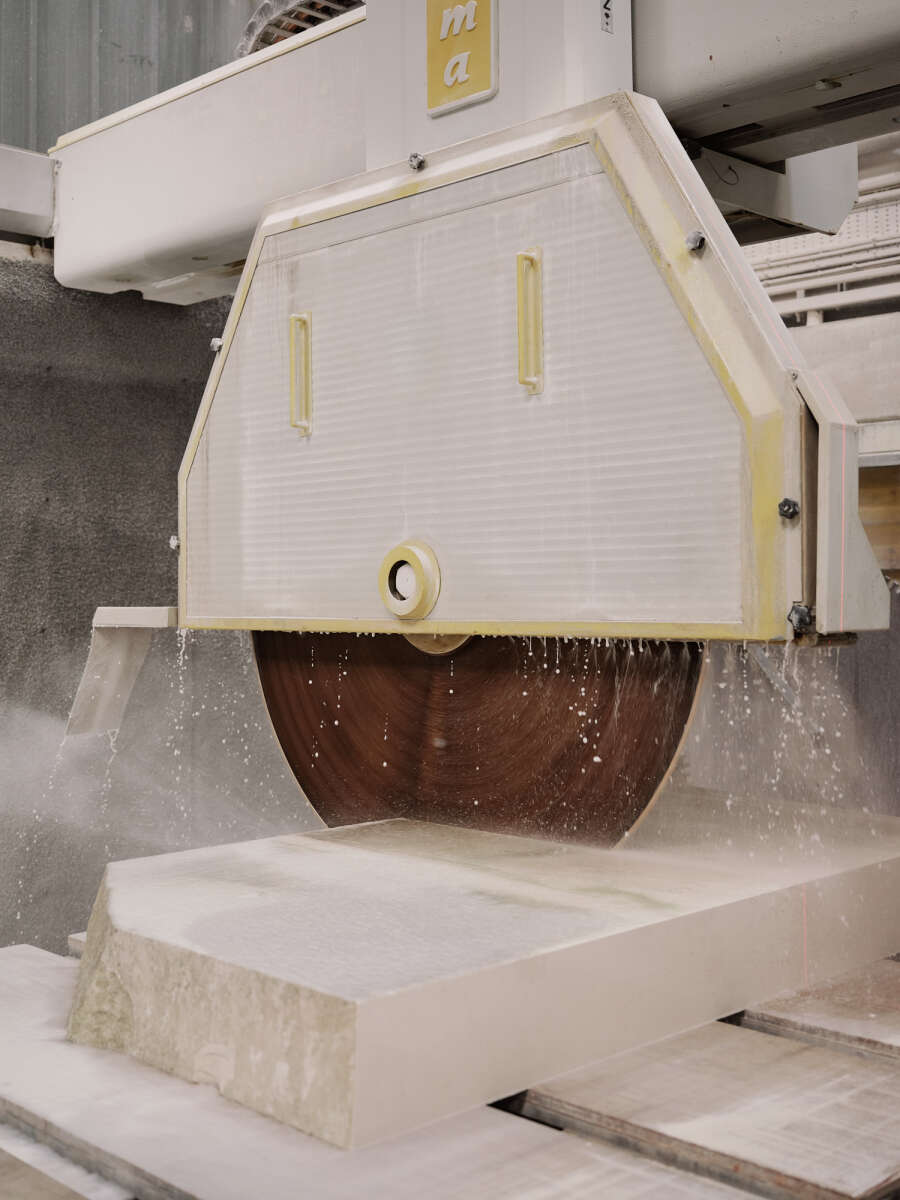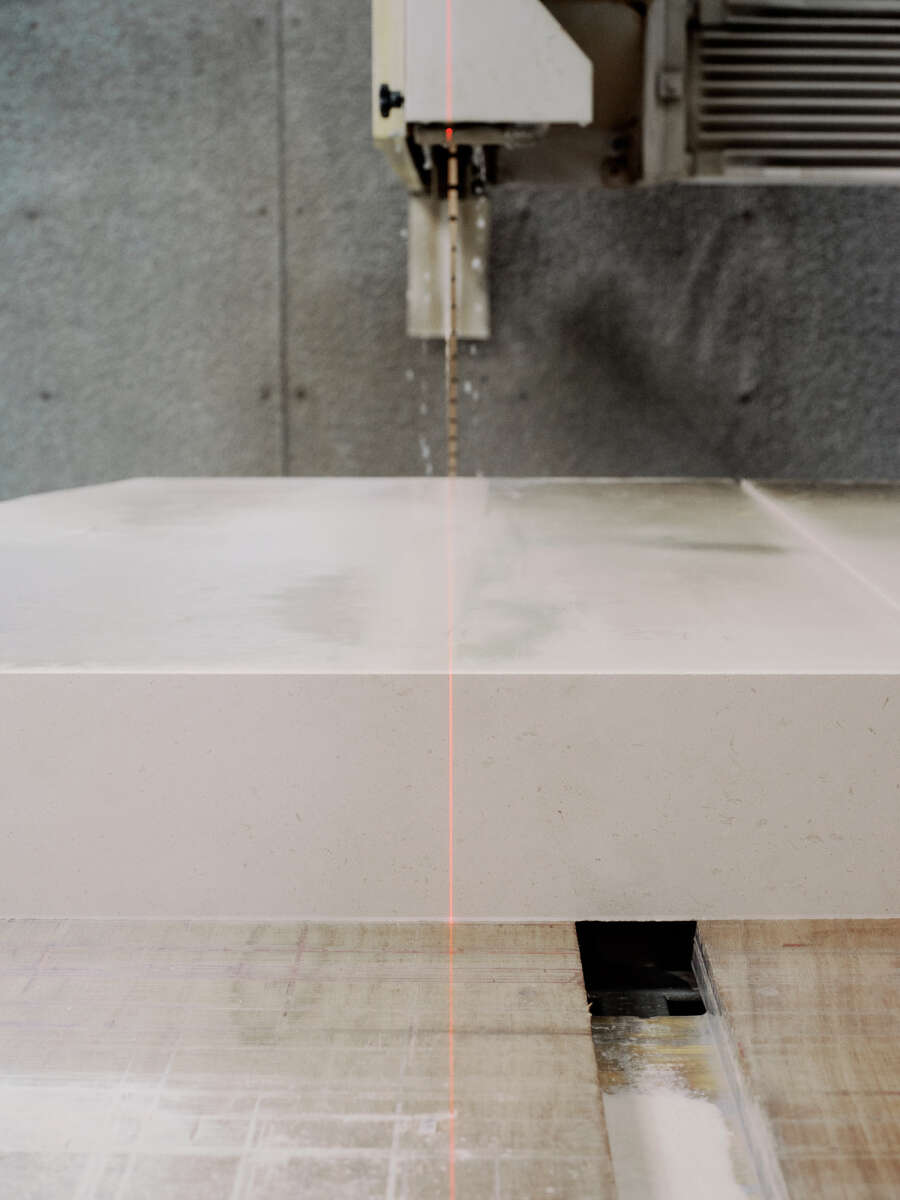From the cutting devices employed by 17th-century water mills to the cable wire cutting saws, steam-powered planers and industrial tip blades used to increase the speed of cutting granite and marble of the 1900s, the stonemason has never shied away from progress.
Stonemasonry was at the forefront of applied geometry with the use of stereotomy, the art of cutting volume through spatial geometry, producing some of the most daring vaults, bridges, and civil and military infrastructure. Stone design knowledge of the past compares to the most powerful parametric software used by stonemasons today.

© The Stone Collective, photo by Pierre Bidaud
Contemporary advanced scanning and imaging techniques allow quarry operators to map out their resources with unprecedented accuracy. This not only minimises waste but also ensures the responsible and sustainable use of precious stone reserves. Modern tracking and triage software ensures that a stone plant can develop a range of the most efficient modules, from large ashlars for quick building to bricks.
Testing technology, with more accurate instruments, can record and study in more depth how stone structures react to different conditions, from loadings in demanding structures to fire testing. Finite elements analyses help predict potential weaknesses in natural materials, allowing for more accurate and safe use. This non-destructive testing, coupled with the scanning of blocks, ensures the optimisation of material use from quarry to installation and maintenance. Ultrasound machines are currently being used to assess the structural integrity of stone blocks in certain projects. In the realm of stone extraction, technology has unlocked new possibilities.
Computer Numerical Control (CNC) technology has breathed new life into the age-old stone-cutting and carving craft. It offers unparalleled precision, allowing for the creation of intricate designs with a level of accuracy that was once unthinkable. From ornate facades to delicate sculptures, CNC has expanded the artistic horizons of stonemasons.

 © The Stone Collective, photo by Pierre Bidaud
© The Stone Collective, photo by Pierre Bidaud
Automation and robotics have also entered the stone processing arena. These technologies streamline the cutting, polishing, and finishing processes, reducing labour-intensive tasks and enhancing efficiency. As a result, stone products can be manufactured more quickly and consistently.
The digital age has brought stone closer to architects and designers. Computer-aided design (CAD) software allows for complex 3D modelling and simulations, enabling professionals to visualise projects in detail before a single stone is cut. This fosters collaboration and creativity, pushing the boundaries of what can be achieved with stone.
Finally, emerging from the understanding that stone, with its high compressive strength, behaves like concrete, using cables and rebars for post and pre-tensioning creates endless possibilities, from prefabricated structural beams and columns to optimising walls and arches.







